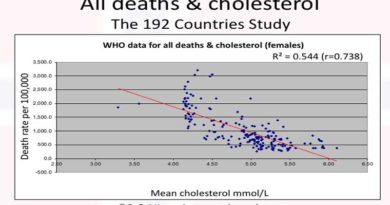World diabetes day
World Diabetes Day is held on the 14th November each year. In last year’s newsletter I looked at the International Diabetes Federation definition of diabetes (which used the word glucose five times and acknowledged that all carbohydrate foods break down into glucose) (Ref 1). I then looked at Type 1 and Type 2 diabetes and the global incidence of, and the projections for growth in, these conditions. I reported the risk factors for T2D according to the UK health service (age, genetics, weight and ethnicity) and then challenged these assumed risk factors by looking at the 10 countries with the highest incidence of diabetes in the world.
This year I am going to look at the dietary advice for diabetics issued by the UK and the US official organisations for diabetes. I’ll start with the UK, as the advice is classic:
Diabetes UK
The official Diabetes UK organisation (diabetes.org, not the sensible diabetes.co.uk) has clear dietary advice on its website (Ref 2). It is based on the UK ‘Eatwell’ Guide, which I have written about often (Ref 3). There are five ‘food groups’ on the ‘Eatwell’ Guide, although they aren’t food groups, as I explained in this post (Ref 4). The five groups from the ‘Eatwell’ Guide and the Diabetes UK advice that accompanies them are as follows:
The page from which these verbatim extracts come from is called “What is a healthy, balanced diet for diabetes?”
“Fruit and vegetables: Everyone should eat at least five portions a day. Fresh, frozen, dried and canned fruit in juice and canned vegetables in water all count.”
“Starchy foods: Potatoes, rice, pasta, bread, chapattis, naan and plantain all contain carbohydrate, which is broken down into glucose and used by your cells as fuel. Try to include some starchy foods every day.”
“Meat, fish eggs, pulses, beans and nuts: These foods are high in protein, which helps with building and replacing muscles. They contain minerals, such as iron, which are vital for producing red blood cells. Oily fish, such as mackerel, salmon and sardines, also provide omega-3, which can help protect the heart. Beans, pulses, soya and tofu are also good sources of protein.”
[ZH – notice that meat wasn’t mentioned in the examples. The more detailed advice recommended “using beans and pulses in a casserole to replace some – or all – of the meat.”]
“Dairy foods: Aim to have some dairy every day, but don’t overdo it. Some dairy foods are high in fat, particularly saturated fat, so choose lower-fat alternatives (check for added sugar, though).”
“Foods high in fat and sugar: You can enjoy food from this group as an occasional treat in a balanced diet... Fat is high in calories, so try to reduce the amount of oil or butter you use in cooking. Remember to use unsaturated oils, such as sunflower, rapeseed or olive oil, as these types are better for your heart.”
That’s the Diabetes UK advice helpfully summarised on one page. There is nothing in this “healthy balanced diet for diabetes” summary about carbohydrate, let alone the need to restrict carbohydrate. There is a separate page for “Carbohydrate and diabetes: What you need to know” (Ref 5). The following statements are verbatim extracts from that page (in quotation marks). My comments start with ZH afterwards:
The rest of this article is available to site subscribers, who get access to all articles plus a weekly newsletter.
To continue reading, please login below or sign up for a subscription. Thank you.




